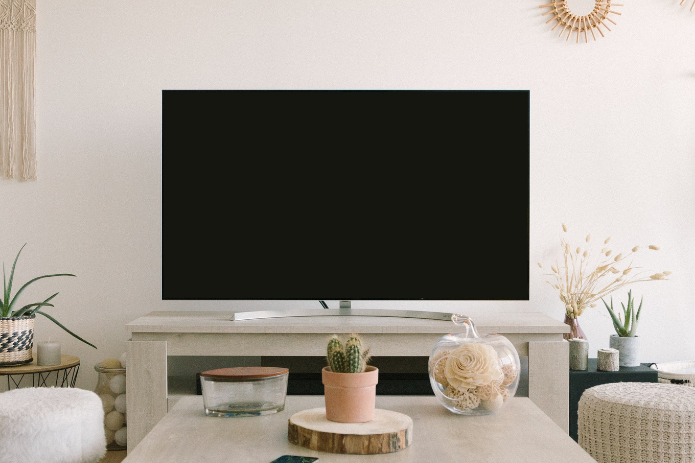Picking a new television can be difficult, especially when you are faced to choose between LED and OLED. Both options have their advantages so to help you pick, we will break down the comparison between LED and OLED TVs. First, we will explain what they are.
Definition of LED and OLED TV
LED TV
LED TVs are actually LED-backlit LCD television, with the LED standing for light-emitting diodes. Essentially, the televisions are made of two parts: an LCD panel and a separate backlight. On its own, the LCD panel cannot be seen so they require a backlight that will shine through the panel so the colours would appear. These days, almost all flat-screen televisions use LED as a source of backlighting but not all the LED will provide the same display quality. This is because the number and the quality of the LEDs used as the backlight will affect the brightness and black levels of the television.
OLED TV
On the other hand, OLED TVs do not require a separate backlight for the colours to appear because OLEDs, or organic light-emitting diodes, can produce both light and colour when fed with electricity. Since each pixel in an OLED TV receives its power and from an internal source, it can have an impact on the black levels in a display when these pixels are not in use. Another advantage of OLED screens is that they can be very thin and flexible; however, OLED TVs have a higher market price than LED TVs, and are quite expensive.
Compare between LED and OLED TV
To see which is better between the two, we will compare a few criteria which include the black level of the display, the brightness, the colour space, refresh rate, and response time.
Black Level
The black level of a television refers to the display’s ability to produce deep and dark blacks. This is one of the most important factors in achieving a high picture quality because deeper blacks will allow for higher contrast and richer colours. If your television has a higher black level, the results will be a more realistic and dazzling image.
Since LED TV relies on LED backlights to shine behind an LCD panel, it selectively dims the diodes that don’t need to be on at full blast. This is the reason why it is hard for LED TV to produce dark blacks. Meanwhile, if an OLED pixel in an OLED television does not receive electricity, it does not produce any light and therefore, remains black.
The winner is the OLED.
Brightness
Brightness is one of the things most people look for in television and judging from the component, LED TV seems to have an advantage in this criterion. As mentioned previously, the backlights in LED television can be made from large and powerful LEDs, which will affect the quality of the television. OLED TV can also get quite bright but since the pixels in OLED TVs are self-sufficient, increasing the brightness above the recommended level can reduce the television’s lifespan.
In this case, the LED TV is slightly better.
Colour Space
Colour space refers to the colour accuracy, colour brightness, and colour volume of a television. Previously, OLED TVs used to rule this criterion, but newly released LED TVs have seen a significant improvement, putting the two on par with each other. Both LED and OLED TVs support a wide colour gamut and HDR, and both have good contrast ratios and can produce well-saturated colours.
LED and OLED are at a draw this time.
Refresh Rate and Response Time
Refresh rate is how often and how fast the entire image on the screen changes, while response time is the time taken by each pixel to change its colour and brightness. A high refresh rate allows for smoother images, especially in fast-moving content like action scenes or sports. If the television comes with a fast response time, there will be less motion blur which will give you clear and crisp images.
For refresh rates, both LED and OLED TVs can offer a fast refresh rate, putting them at a tie. However, OLED TV currently offers the fastest response time in any television technology, which also means it overtakes LED TV as well.
Because of that, OLED is the winner for this criterion.
Conclusion
Overall, OLED television is the better option between the two but that does not mean that LED TVs are not good. Both options are great, and it is up to you to choose the better one for your space, needs and budget.


